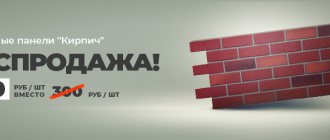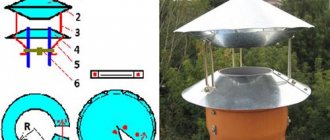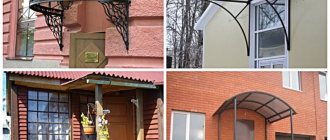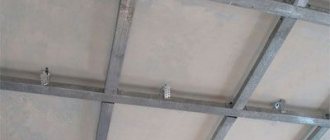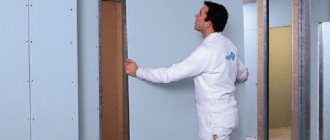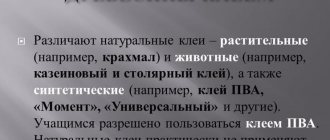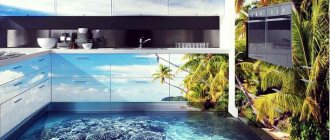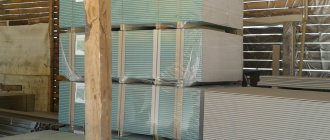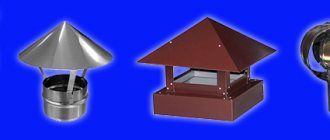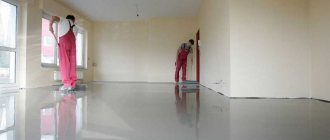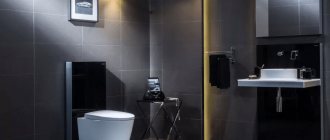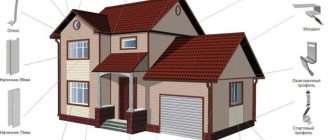Do I need a cap?
The regulations governing the safety of the installation and use of chimney umbrellas vary from country to country. If in Europe the legislation strictly prohibits the installation of nozzles on chimneys, while there is no such restriction for ventilation, then the legislation of the Russian Federation has a nuance. The wording is vague, which is why there is no direct prohibition.
Obviously, the existing disadvantages must be taken into account, so when installing the cap the following should be taken into account:
- If the efficiency of a round steel pipe is less than 85%, then you should not install a mushroom-shaped nozzle. As a replacement, you need to use a cone nozzle.
- When using a heat generator with high efficiency, you can install a roof-shaped nozzle.
- For stoves and TT boilers, umbrellas are a suitable option. To protect the nozzle from gases, a stainless steel plate is installed.
- If the gas outlet is realized using side vents, then gable or hip hoods should be used.
Cone-shaped cap Source 1-line.pro
You need to choose the type of chimney hood to install based on the type of pipe. Conventional mushrooms are suitable for ventilation, and cone-shaped nozzles are suitable for gas ones.
Types of protective elements
Products for protecting the chimney from precipitation and debris vary in appearance.
According to the cross-section of the pipe there are:
- round;
- rectangular;
- square.
The most common designs include:
- Models in the form of houses. They have a hipped roof.
- Houses with gable roofs.
- Chimneys with semicircular and cone-shaped roofs.
- Flat umbrellas.
Additional elements can be attached to the chimney cap. This could be a spark arrester, a weather vane, ornaments, figurines (skates, birds) and other decorative details.
Pros and cons of a house chimney umbrella
The main advantages of the hood are:
- Reduces the likelihood of the draft overturning by preventing wind flow from the street.
- Protection from debris and precipitation.
- The net will prevent birds from building nests.
- Increasing the service life of a brick pipe.
- Appearance.
Attention ! You should not believe the information disseminated in advertising of such devices. The cap cannot increase the efficiency of the boiler or increase the draft in the pipe.
Formed icicles on the canopies Source obustroeno.com
See also: Catalog of companies that specialize in the design, installation and repair of roofs
But there are some reasons that do not allow caps to be used everywhere. The main disadvantage is the creation of aerodynamic drag. The fungus located directly above the pipe will prevent gases from escaping. Subsequently, this will lead to a decrease in traction.
The second disadvantage of the design is the possibility of the formation of icicles. Due to the low temperature of the gases, up to 120 degrees Celsius, water vapor, upon reaching the hood, quickly cools and forms ice, which prevents carbon monoxide from escaping through the pipe from the house.
Advantages of installing a chimney
The positive effect of an umbrella placed on a ventilation or chimney pipe will be as follows:
- rain moisture or snow will no longer get inside;
- an umbrella with wind protection for the chimney will prevent smoke and exhaust gases from blowing back into the room;
- Birds will not build a nest inside the chimney, and mice or other pests will not get in;
- the brickwork of the pipe will remain intact longer;
- a design of an unusual shape or color will decorate the roof, which is especially important if the pipe spoils the view;
- by choosing a suitable deflector, you can increase draft and heating efficiency;
- You will need to clean the chimney less often.
If the hood is placed over a pipe installed to remove odors from a country toilet, septic tank or sewer, then due to increased draft, ventilation will become more efficient.
Umbrella or deflector
Building codes indicate that installing baffles on pipes from gas boilers is strictly prohibited. The reason is the possible formation of ice on horizontal sections of the pipe, which will lead to deterioration in traction. The deflector is an aggravating factor due to which the freezing process will occur faster. For exits from gas boilers, only primitive umbrellas can be used to prevent the entry of debris and precipitation.
A weather vane with an interesting design that can destroy the chimney Source kaminych.rf
The shape of the installed cap depends on the shape of the chimney. If the house uses a sandwich chimney system, then the chimneys are equipped with a special skirt to ensure thermal insulation. In brick pipes, it is enough to equip the cap with a base to protect the bricks from the effects of precipitation. Deflectors are allowed for installation on metal pipes of boilers that operate on solid fuel.
It is worth abandoning weather vanes. Such structures are constantly exposed to wind pressure, which creates vibration that gradually destroys the brick pipes. As a result, not only the cap, but also the chimney itself quickly wears out.
What to pay attention to when installing
When installing smoke vents on the roof, you need to avoid placing the hood too low and keeping the visor close to the smoke outlet - this will reduce the draft. Small holes on the sides of the structure can lead to them freezing in winter and completely blocking the exit of exhaust gases. Freezing occurs if you heat a stove or fireplace with damp wood; when heating with gas, such cases are more rare.
If the structure is made weak or too small, it may fall into the chimney and block the chimney. This can lead to dire consequences. Especially with gas heating. The smoke of wood or coal is easily identified by smell, but when natural gas burns, it produces carbon monoxide (or carbon monoxide), which does not smell anything. It acts unnoticed - people lose consciousness, becoming increasingly poisoned.
For this reason, in Europe it is legally prohibited to install a weathervane for fireplace and stove pipes on the roof. There, these structures are permissible only for the exits of ventilation and sewer ducts, the clogging of which is unpleasant, but will not lead to death. There is no ban on chimneys in Russia, but for safety reasons it is better to trust the calculation of their sizes to professionals, or to carefully observe SNiPs.
If you make a cap from low-quality material, the smoke will quickly corrode it. Cheap galvanizing lasts no more than two to three years. Galvanized steel with a polymer coating remains unharmed much longer, and even longer - stainless steel and copper, although their price is higher.
If the ventilation and chimney are made as a single block, they are covered with gable caps so that snow can easily slide down the two slopes. In this case, the chimney outlets of boilers operating on gas or diesel fuel must be isolated from the ventilation outlets. In these cases, chimneys with additional channels are installed.
You should approach the arrangement of the chimney with the utmost thoughtfulness. In order for it to bring benefit and not harm, you need to comply with SNiPs, correct dimensions, and use reliable materials that can withstand aggressive environments. If everything is done correctly, the cap will improve the appearance of the house, optimize the chimney system and protect the pipe from destruction.
What are fungi for ventilation pipes made from?
Before making a canopy for the pipe, you need to decide on the material. Most often, non-ferrous and ferrous metal is used to make fungi; the thickness does not matter. The most widely used products are products made from galvanized sheet metal.
The most common material is galvanized sheet Source by.prom.st
The finished product is painted in color to improve its appearance, since black steel has an unattractive appearance. To improve the appearance, the product can be additionally decorated with forged elements. But caps made of black steel will have a significant disadvantage - weight, which is why the design is not suitable for all roofs.
If weight is an important parameter, then copper and alloy steel mushrooms should be considered. The disadvantage of structures made from these materials is their high cost. Therefore, the second criterion when choosing material for a canopy is the financial capabilities of the building owner. To save money, canopies are often built with their own hands, using high-quality materials.
Frame installation
We take careful measurements and guarantee that our products exactly match the dimensions of the pipe, minimal gaps during installation, which means more accurate installation, and the absence of defects and deformations.
Not only the material determines the durability of the structure and full functionality. The skill of the person who makes the frame is important
Only a professionally made product will last for decades without causing any trouble.
Our company will produce all types of frames, from simple to sophisticated! We will install the decorative casing on the pipe on a turnkey basis!
DIY visor
Before you make a fungus on a tin pipe with your own hands, you need to create a sketch depicting the future structure. In this case, it is necessary to take into account the following nuances:
- slope angle from 30 to 45 degrees;
- the edges should protrude by 50 mm;
- the height from the chimney to the umbrella is at least 100 mm.
Necessary parameters for making a hood Source izhartezia.ru
The easiest way is to create a round mushroom suitable for ventilation systems. This will require standard tools: drill, metal scissors, hammer, rivets. How to make an umbrella for a pipe with your own hands:
- Take a wooden plank.
- Screw 2 screws into it at a distance of more than 15 mm relative to the radius of the pipe.
- Using the created device, draw a circle on a metal sheet.
- Cut out the prepared circle.
- Draw a sector with an arc length of about 120 mm.
- Cut out the wedge and secure the edges of the workpiece in a vice.
- Prepare 3 holes along the edge of the seam to connect the part using rivets or M4 screws with nuts.
The leg for the manufactured umbrella can be a thin sheet, bent 3 or 4 times. For a novice specialist, this will take a little more than half an hour. Experienced professionals will be able to complete the task in 10-15 minutes.
Ready-made version of the manufactured visor Source stb26.ru
Step-by-step description of the installation process
It is very important to take a responsible approach to installation, since it depends on it whether the chimney will perform its functions. Otherwise, there is a risk that it will simply become a decoration for the roof.
It is important that the assembly conditions comply with safety regulations. You should work in shoes with soft soles so as not to damage the roofing material. Wear a thick robe, gloves, and prepare a fastening for the safety rope.
Sequencing:
- Prepare holes in the apron for fasteners. Diameter – from 5 mm, pitch – 15 mm.
- Place the weather vane on the chimney and secure it. Using a form, drill holes in the chimney.
- Remove the chimney.
- Place dowels under the screws into the holes.
- Install the weather vane on the pipe so that the holes match and secure with self-tapping screws.
For additional fastening strength, it is recommended to install a steel clamp and crimp it. To check the reliability of installation, tap with a hammer along the perimeter of the apron, this will help to understand whether there is any displacement under loads; you should also press with your own weight on the cap.
For reliability, metal surfaces are covered with a protective coating selected depending on financial resources, conditions of use and decorative properties.
Principle of operation
Installing a cap on the chimney will not only protect against water and debris getting into the chimney pipe, but also allows you to optimize the draft in the heating device. This happens as follows:
- the air flow rests against the wall of the upper cylinder and is forced to go around it from all sides;
- sliding along the surface of the cylinder, the air stream turns upward, at this time the smoke coming out of the channel is sucked in;
- the air movement inside the chimney becomes more intense, a zone with reduced pressure is created at the top of the chimney, where smoke from the combustion chamber rushes;
- if the wind jets are directed vertically or at an angle, they penetrate into the upper cylinder through the gap and suck gaseous combustion products into the pipe.
Expert advice
- When there is a low wind, vortex phenomena are formed under the hood, which impair traction. If you install a reverse cone under it, it will reflect the air flow, cut it and lead it out;
- if a round cross-section device is installed on a brick pipe, then the installation of a corresponding adapter is additionally required;
- the chimney must be located no lower than the roof ridge, ventilation exhaust pipes and other structures, if they are located close to the chimney.
